 Photo ©
Keith Williams
Photo ©
Keith Williams
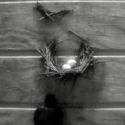
Shedding Some Light on Chimney Swifts
Birds have devised some ingenious nesting strategies to conceal and protect their offspring. Some nest in tree cavities or nest boxes, others in dense shrubbery, and some even hide in plain sight. Perhaps no other North American bird has a strategy as bizarre as that of the amazing Chimney Swift, an aerial acrobat that spends most of its life on the wing. Because of their inaccessible nesting sites, very little is known about what goes on in a Chimney Swift nest. What we do know is that both sexes help to build a nest that looks like a half-saucer made out of twigs which are glued to a vertical wall with the swifts’ own saliva. Because it is extremely difficult to monitor these nests, one of the best ways to learn about them is to install a nest camera in a known nesting chimney before the swifts arrive in the spring. Watching their nests take shape in the night vision of the camera, we see that the engineering is precise; it has to be if the eggs, usually 4–5, are to stay balanced in half the space normally allotted to other bird species. Thanks to a nest camera hosted by Saint Vincent College in Valencia, PA, you, too, can peek into the dramatic process unfolding in chimneys across the country right now.
Chimney Swifts naturally nest in hollow trees and dark caves, but when European settlers arrived and began to construct chimneys, silos, and wells, the swifts began using these sites more frequently. Today, they are most commonly found nesting in cities, even more so than in surrounding rural landscapes. You will know them by their cigar-shaped bodies and boomerang-like wings, which appear to beat asynchronously when they fly. You might even hear their high-pitched calls high above the rooftops as they catch flying insects. There are often 1 or 2 helpers at the nest in addition to the mated pair; sometimes these helpers are the pair’s offspring from previous years. Once the breeding season has ended, Chimney Swifts gather in large flocks to roost by the hundreds, sometimes thousands, in a single chimney. These large flocks will migrate to Central and South America en masse, stopping to roost in a different chimney along their route each night.
Chimney Swifts are faithful to their breeding sites and will return year after year to the same chimney. When a nesting chimney collapses or is capped, the swifts must find a new home. Some people have successfully provided an alternate home by constructing a Chimney Swift tower. These little dynamos live life on the edge and are fascinating to watch–see for yourself.
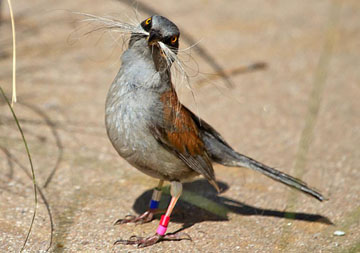
Get to Know Your Nesting Birds: Free Access to Birds of North America Online!
To help you better know the life history of your nesting birds and to answer any questions you may have about the activities of your birds, participants and supporters of NestWatch now have free and complete access to the Birds of North America Online database through the month of July.
As you may know, the Birds of North America Online is acknowledged as the preeminent source of life history information for the over 700 species of birds that breed in the United States and Canada. Maintained by the Cornell Lab of Ornithology in partnership with The American Ornithologists’ Union, this comprehensive resource is authored by experts on each species. Each species account includes information on distribution, identification, behavior, breeding biology, and conservation. The accompanying multimedia includes photos of various plumages, examples of sounds, and videos of interesting behaviors.
To gain free access to this resource, please visit the BNA Online Proxy page. Once there, select “Other Organizations” and then select “NestWatch” from the dropdown menu of Organizations on the next screen. Then enter the following User Name and Password:
User Name: NestWatch
Password: Bluebird
After clicking submit, you will immediately be taken to the BNA Online Home Page where you will have complete access to the BNA Online database. We hope you enjoy having access to this comprehensive reference!
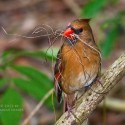
Home Run, Cardinals!
The first record of 2013 has officially been broken! Entries for Northern Cardinal nests have just surpassed their highest level in NestWatch history. Great job, everyone! Until as recently as 2005, there were no Northern Cardinal nests being reported to NestWatch. Our database has grown from 1 nest in 2006 to last year’s high of 77. NestWatchers have already recorded over 100 attempts so far this year. The state with the most cardinal nests is currently Texas.
Shortly after the record for Northern Cardinal was broken, that of the House Finch was also shattered. The previous record of 100 nests was just surpassed with a comfortable lead. Would you like to find a Northern Cardinal or House Finch nest? Review our focal species page for tips on where to look, and learn about their breeding biology.
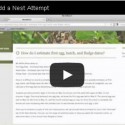
Watch and Learn
We are thrilled to announce that NestWatch has just released 5 new tutorial videos to help you learn the ropes of data entry! Some of the topics covered include Registering a Nest Site, How to Add a Nest Attempt, and How to Archive a Nest.
Follow along as your host guides you through the process of getting started with data entry. More tutorial videos are planned to help you get the most out of NestWatch, so check back throughout the summer for new additions. If you’ve been wondering how to correctly enter your observations or what to do with those old nests, watch now and see how easy it really is.
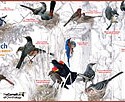
Monthly Winner
At the beginning of each month, NestWatch randomly selects one participant who has entered data that month to receive a copy of the NestWatch Common Nesting Birds of North America poster. This month’s lucky winner is Patricia Dutton. Congratulations, Patricia!